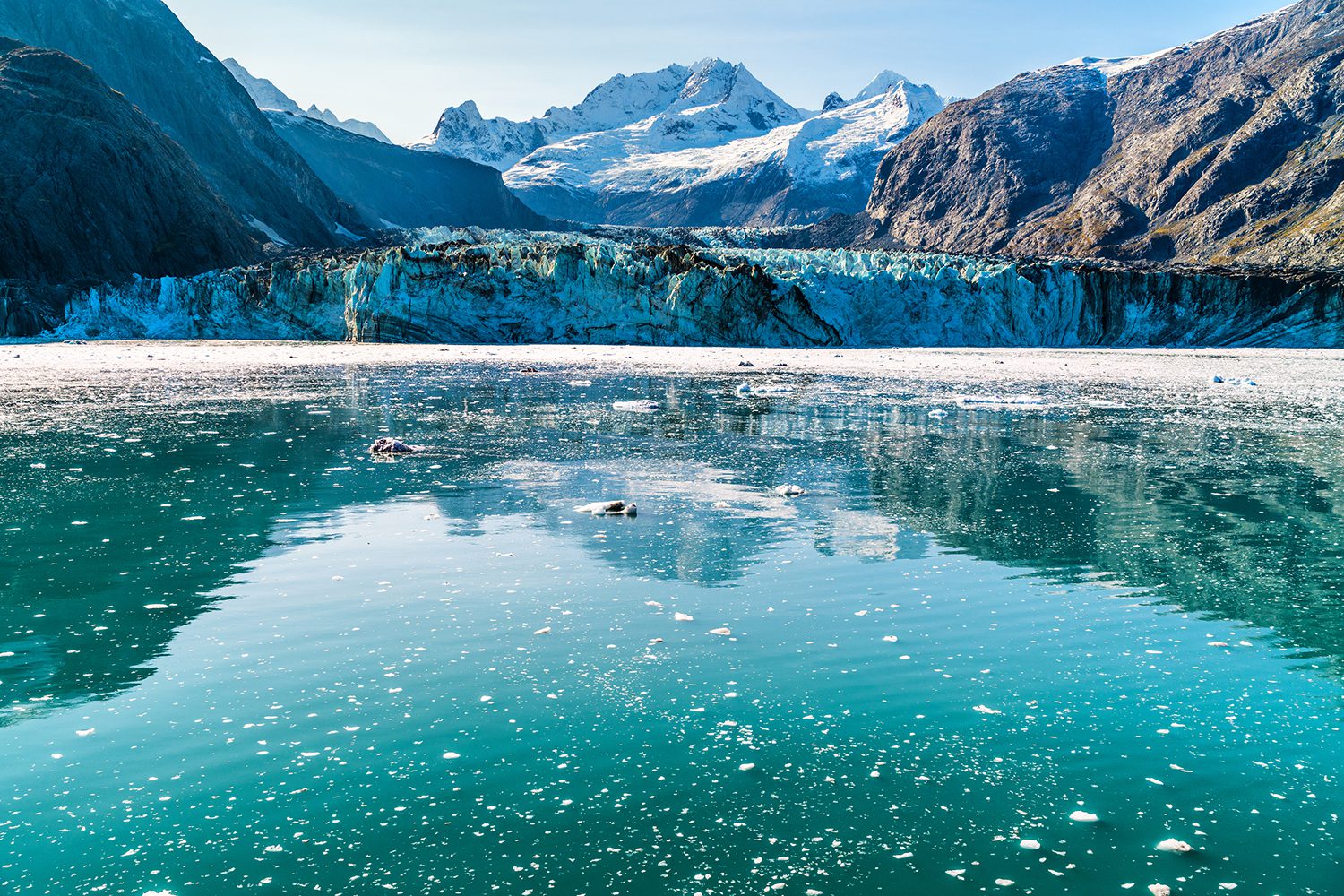For most of the past 10,000 years, global average temperature has remained relatively stable and low compared to earlier hot conditions in our planet’s history. Now, temperature is among the highest experienced not only in the “recent” past—the past 11,000 years or so, during which modern human civilization but also probably for a much longer period.
Carrie Morrill of the National Climatic Data Center explains, “You’d have to go back to the last interglacial [warm period between ice ages] about 125,000 years ago to find temperatures significantly higher than temperatures of today.”
Roughly 20,000 years ago the great ice sheets that buried much of the Earth stopped their creeping ice upward. Within a few hundred years sea levels in some places had risen by as much as 10 meters— that would be more than if the ice sheet that still covers Greenland were to melt today. This created freshwater. The freshwater flood filled the North Atlantic and also shut down the ocean currents that conveyed warmer water from equatorial regions northward. The equatorial heat warmed the precincts of Antarctica in the Southern Hemisphere instead, shrinking the fringing sea ice and changing the circumpolar winds. As a result—and for reasons that remain unexplained—the waters of the Southern Ocean may have begun to release carbon dioxide, enough to raise concentrations in the atmosphere by more than 100 parts per million over millennia—roughly equivalent to the rise in the last 200 years. That CO2 then warmed the globe, melting back the continental ice sheets and ushering in the current climate that enabled humanity to thrive.
This is the story told by a new paper published in Nature on April 5 that reconstructs the end of the last ice age. Researchers examined sediment cores collected from deep beneath the sea and from lakes as well as the tiny bubbles of ancient air trapped inside ice cores taken from Antarctica, Greenland and elsewhere. (Scientific American is part of Nature Publishing Group.) The research suggests that—contrary to some prior findings—CO2 led the prior round of global warming rather than vice versa, just as it continues to do today thanks to rising emissions of CO2 and other greenhouse gases.
According to paleoclimatologist, Jeremy Shakun, a National Oceanic and Atmospheric Administration fellow at Harvard and Columbia universities, who led the research charting ancient CO2 concentrations and global temperatures. “CO2 was the big driver of global warming at the end of the Ice Age.”
Shakun and his colleagues started by creating the first global set of temperature proxies—a set of 80 different records from around the world that recorded temperatures from roughly 20,000 years ago to 10,000 years ago. Ranging from the magnesium levels in microscopic seashells pulled from ocean sediment cores to pollen counts in layers of muck from lakebeds, the proxies delivered thousands of temperature readings over the period. “Ice cores only tell you about temperatures in Antarctica,” Shakun notes of previous studies that relied exclusively on an ice core from Antarctica that records atmospheric conditions over the last 800,000 years. “You don’t want to look at one spot on the map for global warming.”
Comparing the global set of temperature records with the levels of CO2 in the ancient air bubbles trapped in ice cores reveals that global average temperatures started to rise at least a century after CO2 levels began to creep up. But that local warming may be explained by this shutdown of ocean currents as a result of massive glacial melt in the Northern Hemisphere—a result further reinforced by computer modeling using the data gathered from the real-world record. The reason for the retreat of the ice sheets remains elusive, however.
“We know that the only thing changing in the Northern Hemisphere [20,000 years ago] were these orbital changes” that affect the amount of sunlight striking the far north, explains geologist Peter Clark of Oregon State University, who guided Shakun’s research. The melting in the north could have been triggered “because the ice sheets had reached such a size that they had become unstable and were ready to go.” A climate researcher named Stott argues that the timing of the warming versus that of increasing CO2 levels remain too close to be sure which came first.
It seems humanity has now raised global CO2 levels by more than the rise from roughly 180 to 260 ppm at the end of the last ice age, albeit in a few hundred years rather than over more than a few thousand years. “It’s a tangible example of what rising CO2 can mean for the planet over the long-term.” In fact, the amount of global warming already guaranteed by existing concentrations of CO2 in the atmosphere—392 ppm and still rising—will also play out over centuries, if not millennia. “The rise at the end of the Ice Age and today is about the same [a rise of 100 ppm] and we’re going to be well above and beyond,” most likely increasing concentrations of greenhouse gases by hundreds of parts per million from preindustrial levels, Shakun notes. “We will only see some of that realized in this next century. It will be many centuries and beyond to feel the full effects.”
Earth’s Climate During the Last Ice Age
Earth’s climate system underwent a series of abrupt oscillations and reorganizations during the last ice age between 18,000 and 80,000 years ago (Dansgaard 1984, Bond et al. 1997, 1999). These climate fluctuations were first discovered when scientists reconstructed past temperature variability over Greenland by analyzing tiny changes in the relative abundance of the oxygen-16 isotope versus the oxygen-18 isotope (noted as δ18O and reported in parts per thousand) in ice cores recovered from Greenland glaciers. Each successively deeper ice layer represents a snapshot of Earth’s climate history from the past, and together, the oxygen isotope record told a story of abrupt, millennial-scale climate shifts in air temperatures over Greenland between extremely cold stadial conditions and relatively mild interstadial periods during the last ice age (Figure 1) (Alley 2000, Alley et al. 2003). Read more about the hypothesis here.
How temperature evolved during the Last Interglacial and Holocene eras is controversial
According to an article citing, Candace Major, a section head in NSF’s Division of Ocean Sciences. She noted some data suggest that the average annual global temperature during modern times does not exceed the warmth in the Holocene’s early warm period, called the “Holocene thermal maximum,” which was followed by global cooling. But climate models strongly suggest that global temperatures have risen throughout the past 10,000 years.







